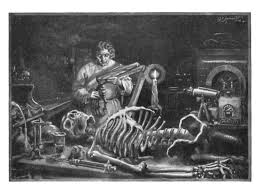Opinions are like. . .you know: everybody’s got one. House editing style guides and preferences are no different. Browse through any random collection of imprint house publications, periodicals, or online articles, and you’ll witness a menagerie of guides, including The Chicago Manual of Style (CMOS), the Associated Press Stylebook (AP), and a smattering of personal preferences seemingly chosen at random. The resulting style format can resemble an amalgamation of spare parts—something akin to a Frankenstein’s monster of house style. The curious aspect is the specific, obscure details individual editors decide to take a stand on—the hills upon which they choose to fight and die.
The minutia editors sometimes battle over regarding their in-house style guides is often actually arbitrary. As Amy Einsohn identifies in her seminal work, The Copyeditor’s Handbook: A Guide for Book Publishing and Corporate Communications, an editor’s chief concern is consistency. Unless a specific punctuation format, page layout issue, or capitalization question muddles an author’s intended message, the specifics of style are subjective. What matters most is developing a house style that nurtures familiarity for readers, a reliable format that endears readers to a publisher’s signature style.
Consider The New York Times, one of the most successful newspaper publications of all time. Many aspects of the paper’s articles adhere to AP style; some do not. The paper’s headlines, for example, resemble a format closer to CMOS regarding capitalization, but the effect is one of the Times‘s most endearing characteristics. The purpose of a house style guide is to engage repeat readers with a given consistency of style.
The concept bears keeping in mind the crucial constituency Einsohn defines: Copy editors must serve the author, the publisher, and the reader (3). An editor’s process begins with the careful initiation of her relationship with an author. “Nothing is so painful to the human mind as a great and sudden change,” (178) writes Mary Wollstonecraft Shelley in her classic work, Frankenstein, and an author experiencing the inner conflict of style choice changes made without their consent can feel personally slighted at the abrupt modification. When an author’s submitted manuscript is suddenly rearranged into a formatting style contradictory to their comfortable darlings, the sudden shift can feel like a wound.
With this in mind, consider the ongoing struggle between prescriptivist and descriptivist grammarians. Carol Fisher Saller writes in The Subversive Copy Editor, “The sad fact is, in spite of their enthusiasm for imposing rules on other people’s copy, copy editors are not always aware that some of their long-held rules are controversial or have even been discarded” (51). In other words, building a monster of style choices harvested from CMOS, AP, and personal preferences doesn’t have to be a blasphemous move away any be-all end-all of standards. A copy editor has to know the rules to break the rules, but as long as the resulting publication serves the constituency, the product isn’t broken.
So, copy editors of the world, as you build your own house style, feel free to unearth your preferences from a range of sources. Borrow a head from here, an arm from there, and bolt it all together into your own, unique monster. As long as the house style guide serves the writer, the publisher, and the reader with a consistent, reliable format, a hybrid of styles is nothing to fear.

